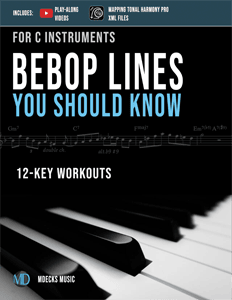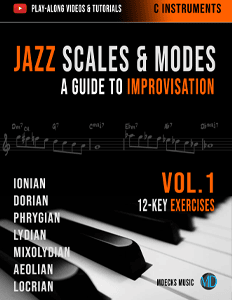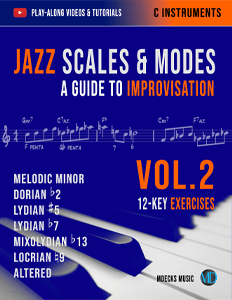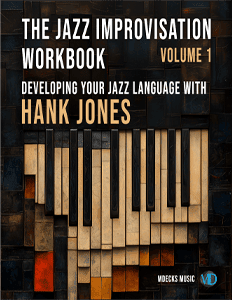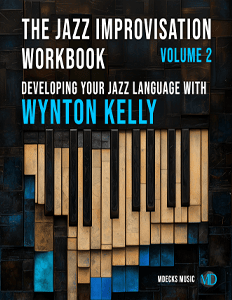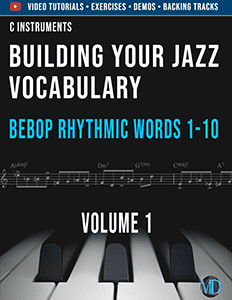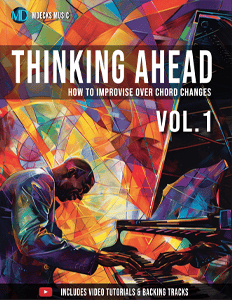Bebop is more than just a style of music, it's a language. To become an accomplished bebop improviser, one must have a deep understanding of the idiomatic phrases and patterns that are integral to the style.
This book covers not just the essential phrases, but also advanced concepts like Chromatic Approaches, Enclosures, Scale Combinations, Lick Transformations, Beat Targeting, and more.
The book includes a carefully curated collection of bebop lines, developed from famous solos by legends such as Bud Powell, Kenny Barron, Wynton Kelly, Bill Evans, McCoy Tyler, and others. To help you internalize these lines, all workouts are provided in all keys.
It's important to note that written music notation can be unwieldy when it comes to complex concepts like chromatic approaches, multiple accidentals, and enharmonic spellings. The sheet music is a starting point to learn these lines, but it's essential to move away from the written music as soon as possible and try to play the lines without looking.
To help you practice improvisation, the book also includes three video lessons (No. 1, No. 19, and No. 20) that cover basic yet crucial aspects of the art.
Also included: Play-Along Backing Tracks & Demos
To make your practice more enjoyable and effective, a play-along backing track is provided for each bebop line (with guitar, bass, and drums).
We have also created demos with the bebop lines performed on piano over the same backing track.
Mapping Tonal Harmony Pro XML file (MTH Pro is not included with this book)
Your download also includes a Mapping Tonal Harmony Pro XML file—with all the progressions from the bebop lines (including, My Foolish Heart, Misty, and Afternoon In Paris)—so you can practice at different tempos, mute tracks, and/or change accompaniment styles.
If you don’t own (or know) Mapping Tonal Harmony Pro app you can learn more here:
Mapping Tonal Harmony Pro
Once you have installed the app (macOS or iOS,) you can import the xml file and practice with the app.



